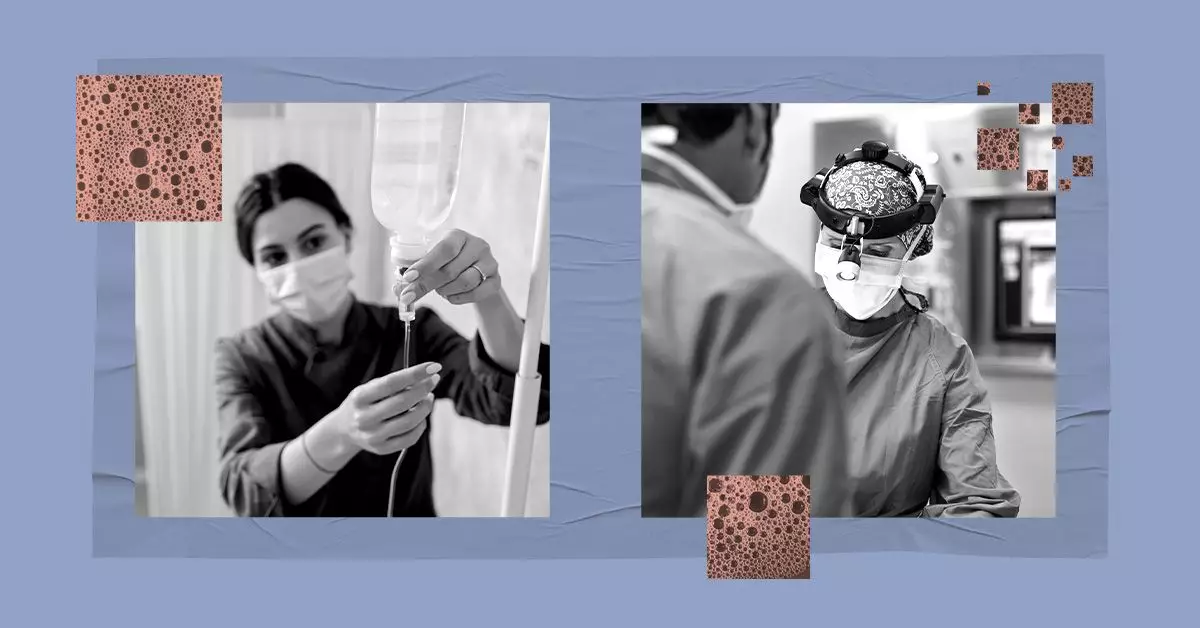Ewing sarcoma is a rare and aggressive form of cancer predominantly affecting children, adolescents, and young adults. It typically arises in the bones or in the soft tissues that encase those bones, signaling the need for a nuanced understanding of its diagnosis and treatment. This article delves into the multifaceted treatment strategies employed against Ewing sarcoma, highlighting the importance of a team-based approach that considers the unique aspects of each case.
Ewing sarcoma is not just a single disease but a collection of tumors that share certain characteristics, primarily linked by their origin in the bone or soft tissue. The pathophysiology of Ewing sarcoma remains complex, often leading to late diagnosis due to its subtle initial symptoms. The cancer is known for its rapid growth, leading to metastasis in various organs, particularly the lungs and bone marrow. Understanding its clinical presentation is vital, as early intervention is crucial for improving survival outcomes.
The treatment of Ewing sarcoma typically requires a specialized and multidisciplinary team, comprising oncologists, surgeons, radiation therapists, and other healthcare providers. Each member plays a unique role in formulating a personalized treatment plan that respects patient individuality.
The complexity of Ewing sarcoma demands that treatment protocols be tailored to each patient’s specific condition, including factors such as the tumor’s size, location, and the presence of metastatic disease. The primary goals of treatment are to eradicate cancer, maintain the maximum possible functionality of the affected area, and minimize the long-term effects and adverse reactions stemming from the disease and its treatment.
Localized Vs. Metastatic Ewing Sarcoma
Ewing sarcoma can be categorized as localized or metastatic, with treatment protocols varying significantly between these two stages. For localized cases, treatment might begin with systemic chemotherapy designed to reduce tumor size and eradicate microscopic cancer cells that may not be visually detectable. Surgery often follows, where the goal is to remove the tumor entirely while preserving as much of the surrounding anatomy and functionality as possible.
Conversely, metastatic Ewing sarcoma indicates that the cancer has spread beyond its original site. Here, treatment strategies become more systemic. Chemotherapy serves as the primary approach, aimed at managing the disease throughout the body. Depending on the specifics, radiation therapy may target residual tumor sites, while surgeries may be performed on specific metastatic locations to alleviate symptoms or remove significant tumor masses.
Chemotherapy remains a cornerstone in the management of Ewing sarcoma. Standard regimens often consist of multi-drug protocols that include agents such as vincristine, doxorubicin, and cyclophosphamide. These therapies are delivered in cycles, requiring diligent patient monitoring to assess effectiveness and manage side effects.
The primary aim of chemotherapy is to target rapidly dividing cancer cells throughout the body, significantly shrinking tumors and addressing any micro-metastatic disease. The impact of effective chemotherapy is evident as it not only paves the way for successful surgical intervention when necessary but also plays a critical role in minimizing recurrence risk after localized treatments.
Surgical resection presents a decisive approach in achievable cases of Ewing sarcoma, as the complete excision of the tumor improves survival prospects. Limb-sparing procedures are often prioritized over amputation, emphasizing the need for specialized surgical expertise to preserve functional anatomy.
Radiation therapy also has a critical role, particularly when the surgical approach is insufficient or impossible. Techniques like intensity-modulated radiation therapy target cancer cells while sparing surrounding healthy tissues, thereby mitigating potential side effects. In many instances, a combination of chemotherapy, surgery, and radiation therapy proves beneficial in securing the best possible outcomes.
Given the challenges inherent in treating Ewing sarcoma, clinical trials investigating innovative therapeutic techniques have gained importance. These may include targeted therapies that focus on specific molecular pathways, immunotherapy tactics aimed at enhancing the immune response against the disease, and novel treatment combinations that seek to improve efficacy and reduce toxicity.
Patients may consider enrolling in critical clinical trials, providing access to cutting-edge therapies that can lead to revolutionary advancements in treatment and survivorship.
Living with Ewing sarcoma brings physical, emotional, and financial challenges. Aside from navigating complex treatment regimens, patients often confront side effects such as fatigue, nausea, and the psychological stress of cancer diagnosis and treatment. Thus, comprehensive support services, including psychological therapy, rehabilitation, and financial assistance programs, are essential for improving quality of life during and after treatment.
Support systems are not merely ancillary but rather integral to the complete care of patients with Ewing sarcoma. Connecting with support groups and accessing resources like the American Cancer Society can significantly ease the burden of this life-altering experience.
The treatment of Ewing sarcoma is multifaceted, requiring a concerted effort from a team of healthcare professionals tailored to each individual’s needs. The advancements in treatment strategies, alongside awareness and understanding of the disease, pave the way for a hopeful outlook for patients facing this formidable cancer.

